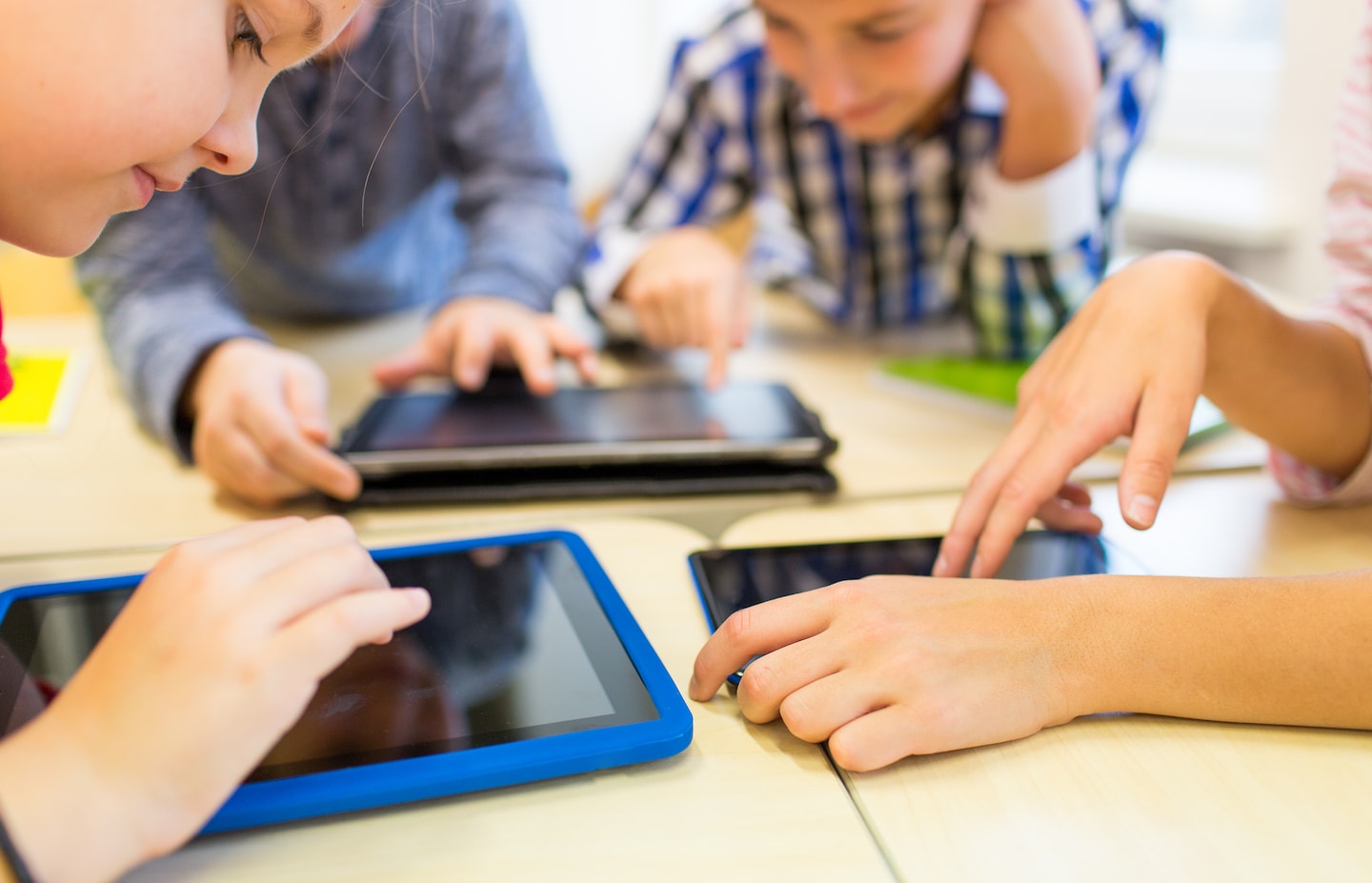What we hear in this international conversation is that “reimagining” really means adding more and more education technology into schooling, kids spending more or virtually all of their learning time on screens with programs supposedly individualized for each student.
This post, by renowned master educator Andy Hargreaves, looks at the issue and explains what students are really going to need when all schools can reopen.
Hargreaves is a research professor at Boston College and visiting professor at the University of Ottawa who has been working for decades to improve school effectiveness. He has been awarded visiting professorships in the United States, Canada, the United Kingdom, Hong Kong, Sweden, Spain, Japan, Norway and Singapore. And he is past president of the International Congress for School Effectiveness and Improvement.
Hargreaves founded and serves as co-president of the Atlantic Rim Collaboratory, or ARC, a group of nine nations committed to broadly defined excellence, equity, well-being, inclusion, democracy and human rights. He has consulted with numerous governments, the World Bank, the Organization for Economic Cooperation and Development, universities and professional associations. He has written more than 30 books — and received numerous awards for them — and he was the founding editor in chief of the Journal of Educational Change.
By Andy Hargreaves
As we head into the dog days of summer, a new mantra is being spread across the world’s governments and through its media. It’s called “reimagining education.” On the surface, much of it, even most of it, sounds helpful and positive. It’s rightfully concerned about the physical health of children and their teachers. Its visions of innovative learning are engaging and purposeful. But eventually, the conclusion is drawn is that these interests can be best advanced by digital technology.
In the midst of the coronavirus crisis, New York Gov. Andrew M. Cuomo (D) signed an agreement with billionaire businessman, Bill Gates, to “reimagine” public education in the state through technology. Cuomo dredged up outworn and inaccurate stereotypes of “the old model of everybody goes and sits in the classroom, and the teacher is in front of that classroom and teaches that class, and you do that all across the city, all across the state, all these buildings, all these physical classrooms.” “Why,” he wondered, “with all the technology you have?”
A report in May by Microsoft, co-authored by its staff on reimagining education has constructive advice on how to create meaningful learning and provide health protections and social distancing once children return to school. Yet its ultimate vision is for a “hybrid learning environment” where “technology will be prominent.” “A blend of real-life and online learning will concur. Learning will happen at school, at home, in the community and beyond.”
This kind of talk is energizing education ministers, international lending banks, technology consultants, and not-for-profits, who are eager to reimagine a better post-covid future for public schools.
In effect, though, a lot of reimagining education is about how learning will be leveraged or delivered in a blended or hybrid format that is available anytime, anywhere, through public-private partnerships involving digital technology.
Yet, after years and billions of dollars of investment in digital technology in schools, there is little firm evidence that it substantially improves children’s learning. In her book “Slaying Goliath,” Diane Ravitch, former assistant secretary of education and public education advocate, showed that there is no evidence to support (and there is much to contradict) the claim that superior performance results from online learning.
The Organization for Economic Cooperation and Development (OECD) is cautious about the benefits of technology for learning. Its own evidence is that “computers do not improve pupil results.” The OECD’s education chief, Andreas Schleicher, has warned that despite some promise shown by technology options during covid-19, “education systems need to pay close attention that technology will not further amplify existing inequalities in access and quality of learning.”
“This is not just a matter of providing access to technology and open learning resources,” Schleicher said. “It will also require maintaining effective social relationships between families, teachers and students — particularly for those students who lack the resilience, learning strategies or engagement to learn on their own.” A July OECD report further advises that “Any digital strategy should take into account potential risks” of things like digital distraction, “and balance digital use with screen-free activities.”
Even before covid-19, excess screen time and technology use had already increased adolescent anxiety, especially after the global penetration of smartphone use among adolescents beginning around 2012. Digital addiction also distracts young children from outdoor activity, free play and face-to-face relationships. During covid-19, young children up to age 11 have been spending more than double the amount of screen time recommended by pediatricians.
Necessity is the mother of invention. During the novel coronavirus, digital learning at home has been an invaluable stopgap to enable children’s learning to persist somehow. It’s hard to imagine how everyone would have coped without the Internet and other digital technologies if this pandemic had happened even 20 years ago.
But if necessity is the mother of invention, we should also avoid making a virtue out of a necessity. Kids, parents, and teachers have been experiencing endless problems with digital learning at home — kids who can’t concentrate: devices that break down; families with several kids, only one device, and practically no space; lessons devoid of humor or emotion; young kids walking off or hiding under tables during the middle of a zoom class (I’m talking about my own 5-year old twin grandchildren here!); insufficient instructions for parents to do things like help the child practice cursive writing (but how, exactly??).
Teenagers are now the greatest mental health risk of all age groups during covid-19. Adolescents need to go to school to be with their friends, develop their senses of identity, become responsible citizens, learn about how to deal with racism and prejudice (especially if they live with parents who may be racist and prejudiced!), and so on. They need less time on screens, not more. We don’t need to be downplaying the importance of physical schools just yet.
When they get back to school, children will not need more of the anytime-anywhere Big Tech strategy. They will need more face-to-face support in the here and now — to get back the habits of lining up, taking turns and listening to others; to get help dealing with the post-traumatic stresses that accompany disasters such as this; to get the special education support to help them deal with learning disabilities and ADHD distractions for which there was little or no support at home, and so on. Learning in the here and now in school will need more human and less hybrid learning. It will need less technology, or more judicious use of it, than most kids have experienced during covid-19.
Of course, technology can and does enhance great teaching by using rich resources and methods for generating interactive student engagement. But technology will not make weaker teachers more inspiring, caring or empathetic, more able to understand and develop global learning competencies like collaboration or citizenship, more able to deal with prejudice and bullying, or more ready to help their children learn and play outdoors. Only effective selection, training and development of teachers can do that.
We can benefit from using digital technology in learning. But we need to do it in a way that deliberately uses technology in a balanced (not just a hybrid or blended) way, and that maximizes the benefits, while minimizing the clear risks of excess screen-time and digital addiction.
A balanced approach to digital technology use should also pinpoint areas where it uniquely provides something of value that cannot be offered in any other way. This is what the business field calls its “unique value proposition” (UVP). One UVP of digital technology occurs when children with special needs are given devices and programs to access and express their learning. Another is when teachers in small, remote rural schools can connect with and learn from colleagues in their subject or grade level who teach elsewhere. These are just two of the many UVPs of digital technology use in schools.
Balanced learning with judicious use of technology is an essential part of the physical schools we will always need. But once kids go home, they don’t stop learning. What happens then?
When I was a teenager, learning after school took place through the books I took home that were shared by my classmates, as well as in the public library that was available to everyone. After school learning was public, universal and free. But digital learning at home — the new global public library — is not public, universal and free.
One thing covid-19 has reminded us of in U.S. education is about the great chasm that is the digital divide. So instead of leaving digital learning resources outside the school to market forces and privileged access, anytime, anywhere, we need to create conditions for technologically enhanced learning that are universal, public and free to those who need it. Learning-related technology outside the school should be a civil right, alongside food, shelter and education itself that is available everywhere and always to everyone as a universal entitlement. It should be free of charge to those who need it.
If this scenario sounds far-fetched, it already exists in several countries. They include one of the world’s highest performers in education, Estonia, where all curriculum materials were already on line before covid-19.
In South Korea, access to the Internet and to digital devices is close to 100 percent. Then there is Uruguay, where every family has access to digital technology for learning. This has resulted from a policy of one laptop per child that was established in 2007, and from a national, government funded innovation agency, that has supported projects that are linked to but not driven by various kinds of technology, in more than a third of the nation’s schools. The existence of this national platform meant that within days of learning moving from schools to homes, use of the digital platform went up by over 1,000 percent.
Immediately after the pandemic, we need to focus on the here and now to help schools cope with post-traumatic stress and other mental health problems, and to reestablish relationships and routines.
Technology has an important role in schools to make good teaching and learning better. But even as a hybrid, it should not be the main driver or leverage for reimagining better learning in schools. It’s not just hybrids or blends we want. We need a thoughtful balance that uses the UVP of technology wherever it can improve learning and well-being, while actively avoiding excess screen time that might disturb that balance, and continuing to promote outstanding face-to-face teachers and teaching that are still the cornerstone of an effective school system.
At the same time, reimagining education should also ensure that additional learning opportunities at home are universal, public and free of charge everywhere and always to all those who need it.
Enough, but not too much of digital technology and a lot more face-to-face support for vulnerable students after the pandemic — that’s what our reimagined new normal now needs to include.

















